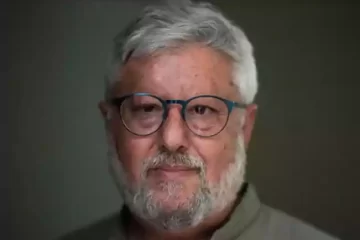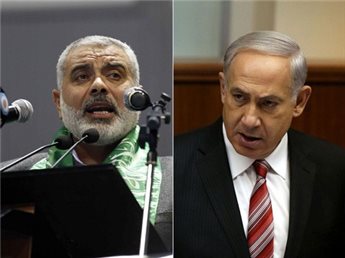The continuing “Great March of Return” in Gaza has already led to some 30 dead and hundreds wounded on the Palestinian side of the Israel-Gaza border. The march has succeeded in rebuilding Palestinian solidarity despite the deepening separation between the Fatah-led Palestinian Authority in the West Bank and the Hamas-led government in Gaza. The Palestinian streets in both West Bank and Gaza are strongly supporting the people of Gaza and their right to protest the horrific and inhuman conditions under which they are living. While the overwhelming majority of Israelis lay almost sole blame for the plight of Gaza on Hamas, the Palestinian people overall place that blame mainly on Israel, then on Abbas, then on Egypt and lastly on Hamas.
Despite what most Israelis believe, the initiative and the compelling force behind the demonstrations comes from civil society in Gaza. Hamas does not control these protests, nor could Hamas at this time order people to come out and risk their lives. The people of Gaza are not robots who act with the push of a button or the call to the (Hamas) flag. Hamas is also making great efforts so far to enable these protests to be seen as representing all Palestinians, from all factions, and not only from Hamas. They are doing so by also preventing Hamas flags from being flown. The Palestinian flag is flying over the demonstrations. Hamas has, at least for now, decided that the protests should be unarmed and Hamas security personnel are even checking people for weapons before they arrive at the border camps.
Israel’s use of live ammunition is perceived around the world as excessive and unjustified. The Israeli army with its thousands of soldiers on the border – over 100 trained snipers, backed by tanks and drones, helicopters and F-15 warplanes, and tons of tear gas – has not sustained a single casualty and Israel’s border has so far not really been threatened by these demonstrations. If the Palestinians continue to employ a largely non-violent, or at least a non-armed struggle, and continue to sustain large number of causalities the results will be continued anti-Israel sentiment around the world, and a very good chance of another round of violent conflict between Israel and Gaza and perhaps even a violent uprising in the West Bank.
As we have seen from all previous rounds of violence since the First Intifada, there are no winners and many losers. Nothing strategically different will emerge on the ground, yet the destruction and death will be tragic and only increase animosity and despair regarding the chances of ever living in peace, quiet and security.
In recent days I have received calls for help from Palestinian friends in various parts of Gaza to develop non-violent campaigns that would appeal not only to international audiences but also to Israelis.
A young woman who has coordinated a group of other young women contacted a trainer of doves and asked if they released hundreds of doves at the border, the symbol of peace, would Israelis get the message? Another young man wrote to me on Facebook: “We are planning to facilitate a series of non-violence workshops for youth and teenagers along the border. We will raise some peaceful words and messages to the Israelis. Plz recommend some words that could bring Palestinians and Israelis together away from violence and confrontation.”
I posted this on Facebook and got hundreds of suggestions that I sent to my Gaza friend by email.
Perhaps more importantly, I received a proposal from a Hamas official, to be shared with high officials in Israel, that Israel and Hamas enter into back-channel negotiations for a long-term cease-fire, along the lines that were discussed with Egypt back in 2012 and again after the 2014 summer war.
The proposal included a long-term cease-fire, lifting the siege on Gaza, allowing people to travel out of Gaza via Israel to the West Bank and beyond, work permits, the beginning of planning for a Gaza seaport with agreed security measures, and the return of the bodies of Hadar Goldin and Oron Shaul, and the two civilians Avera Mengisto and Hisham al-Sayed.
These ideas are not new, and I have talked to Hamas people in Gaza repeatedly over the years on the need to reach arrangements between Hamas and Israel. Former senior officials, including people like former Mossad director Ephraim Halevy, have been calling for these kinds of talks to get underway for years.
I do not really want to strengthen Hamas’s hold on Gaza, but at a time when Israeli-Palestinian peace negotiations are next to impossible, as long as Prime Minister Benjamin Netanyahu is on the Israeli side and Abbas is on the Palestinian side, the need to engage Hamas now becomes more urgent.
As we get closer to May 15 when the March of Return is supposed to reach its peak, and with at least four more Fridays ahead of us, the chances of escalation and a new round of war are too high not to consider every possibility of preventing that.
If Hamas has thrown down a gauntlet to Israel to consider a long-term cease-fire, Israel should pick up the gauntlet and explore every possibility. Human lives are at stake and the future of the region is in the balance.


